
Let's take a look back to the 90s at the ZR1 that preceded the current one. Here's some info about that classic model.
Four years prior to its introduction, the Corvette team approached Lotus, then a GM subsidiary, in 1986 with a concept for developing an ultra-high performance vehicle based on the C4 Corvette. With input from GM's "Corvette Team" of engineers and designers, Lotus designed a new engine to replace the traditional pushrod L98 V-8 that powered the standard C4. The result was the LT5. This engine was an aluminum-block V-8 with the same bore centers as the L98, but with four overhead cams and 32 valves.
A unique air management system provided a wider power band by sh utting off 8 of the 16 intake runners and fuel injectors when the engine was at part-throttle, while still giving the ZR-1 375 hp when at wide open throttle. Since Chevrolet had no facility which could manufacture the new LT5, the engines was subcontracted to Mercury Marine, in Stillwater, Oklahoma, which normally specialized in high-performance marine engines.
utting off 8 of the 16 intake runners and fuel injectors when the engine was at part-throttle, while still giving the ZR-1 375 hp when at wide open throttle. Since Chevrolet had no facility which could manufacture the new LT5, the engines was subcontracted to Mercury Marine, in Stillwater, Oklahoma, which normally specialized in high-performance marine engines.
Lotus also aided in the development of the ZR-1's standard "FX3" active suspension system, which would provide the basis for active suspension systems found (as optional equipment) on all Corvettes since.
In 1991, all Corvettes received updates to body work, interior, and wheels. The convex rear fascia that set the 1990 ZR-1 apart from the base model was now included on L98 Corvettes, making the styling of the expensive ZR-1 even closer to that of the base cars. The most obvious difference remaining between the base and ZR-1 models besides the wider rear wheels was the location of the CHMSL (center high mounted stop lamp), which was integrated into the new rear fascia used on the base model, but remained at the top of the rear-hatch on the ZR-1's.
Four years prior to its introduction, the Corvette team approached Lotus, then a GM subsidiary, in 1986 with a concept for developing an ultra-high performance vehicle based on the C4 Corvette. With input from GM's "Corvette Team" of engineers and designers, Lotus designed a new engine to replace the traditional pushrod L98 V-8 that powered the standard C4. The result was the LT5. This engine was an aluminum-block V-8 with the same bore centers as the L98, but with four overhead cams and 32 valves.
A unique air management system provided a wider power band by sh
 utting off 8 of the 16 intake runners and fuel injectors when the engine was at part-throttle, while still giving the ZR-1 375 hp when at wide open throttle. Since Chevrolet had no facility which could manufacture the new LT5, the engines was subcontracted to Mercury Marine, in Stillwater, Oklahoma, which normally specialized in high-performance marine engines.
utting off 8 of the 16 intake runners and fuel injectors when the engine was at part-throttle, while still giving the ZR-1 375 hp when at wide open throttle. Since Chevrolet had no facility which could manufacture the new LT5, the engines was subcontracted to Mercury Marine, in Stillwater, Oklahoma, which normally specialized in high-performance marine engines.Lotus also aided in the development of the ZR-1's standard "FX3" active suspension system, which would provide the basis for active suspension systems found (as optional equipment) on all Corvettes since.
In 1991, all Corvettes received updates to body work, interior, and wheels. The convex rear fascia that set the 1990 ZR-1 apart from the base model was now included on L98 Corvettes, making the styling of the expensive ZR-1 even closer to that of the base cars. The most obvious difference remaining between the base and ZR-1 models besides the wider rear wheels was the location of the CHMSL (center high mounted stop lamp), which was integrated into the new rear fascia used on the base model, but remained at the top of the rear-hatch on the ZR-1's.
 All corvette ZR-1's had a interesting feature — a power key — mounted underneath the radio. Using this key you could turn the power from "full" to "normal" which disabled the secondary intake ports and cut the maximum power to 200hp.
All corvette ZR-1's had a interesting feature — a power key — mounted underneath the radio. Using this key you could turn the power from "full" to "normal" which disabled the secondary intake ports and cut the maximum power to 200hp.Further changes were made in 1992: ZR-1 badges were displayed on both front fenders and traction control was added as a standard feature. In 1993, Lotus redesigned the cylinder heads and valve-train of the LT5, resulting in a horsepower increase from 375 to 405. In addition, a new exhaust gas recirculation system improved emissions control. Production of the ZR-1 ended in 1995, after 6,939 cars had been built.











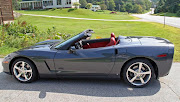





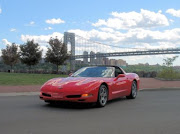
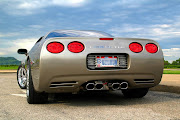
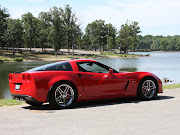



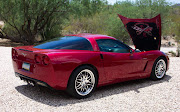
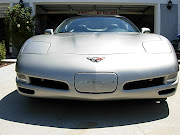

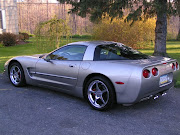
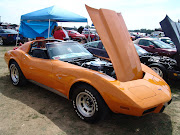


No comments:
Post a Comment